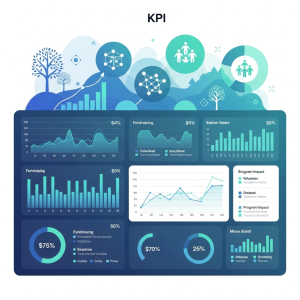Using data to drive decisions, being data-savvy, harnessing the power of your data…all of these buzz words get bandied about during meetings, at conferences, in the trades, and online, but what does it really mean? How do you even know if you are a data-driven organization?
At Datatelligent, and throughout my extensive career in data analytics, I see becoming a data-driven organization as an iterative process. Think of it as a continuum. While it might seem overwhelming to assess and implement the organizational changes required to be in the data-driven zone, it’s more realistic and manageable to break the evolution into steps.
Step 1: Data Aware
You first need to recognize that your organization has disconnected information — nearly every entity does. For those companies just beginning their journey, these pieces of data may be tracked using manual, non-standard reports. And decisions rarely are made using the available data.
Step 2: Data Proficient
Your organization is tracking and collecting data using standardized reporting tools or reporting platforms, but the information may not be shared collectively. The data may not be well utilized for decision-making or planning.
Step 3: Data Savvy
You’re getting there. Your company tracks and uses data to make some business decisions, but the information may be trapped in silos between groups/departments, and the methodology to collect and report data may be inconsistent.
Step 4: Data-Driven
You’ve arrived at the pinnacle! Your organization uses data-first thinking from the start. All people and processes are in sync for data collection, tracking, and utilization. And data analysis is embedded into your decision-making practices.
So How Do You Get There?
It’s essential to look at the big, broad picture for your organization first — try to establish a high-level plan that is connected to your institution’s mission. This will help ensure that the data you mine is connected to achieving the results that matter to your stakeholders. What data will help you reach your business goals? Do an honest assessment of where your organization is in its analytics maturity (as per the steps above). Do you need to make any changes/adjustments to get started?
Next, invest what you can and adopt an iterative approach. This is more cost-effective than tackling an enterprise-wide solution, and it allows you to focus on projects that bring immediate value and smaller wins. Snowball this and add on as you build confidence and support throughout the organization.
Lastly, it’s essential to establish a unified approach. Develop a unified data platform to be rolled out across all parts of the organization. Bring together stakeholders to set the tone of collaboration and resist the temptation to silo information. And empower staff to access the data and tools in order to make decision-making a data-driven exercise. Invest in consistency, connection, and training.
To learn more about how Datatelligent has helped companies large and small, as well as colleges and universities, become data-driven, visit datatelligent.ai.
By Larry Blackburn, Chief Solutions Officer, Datatelligent







